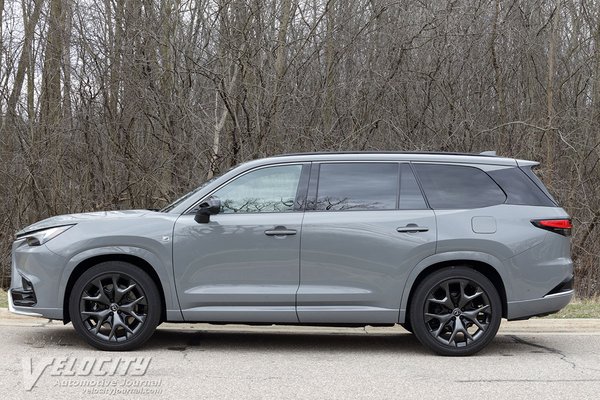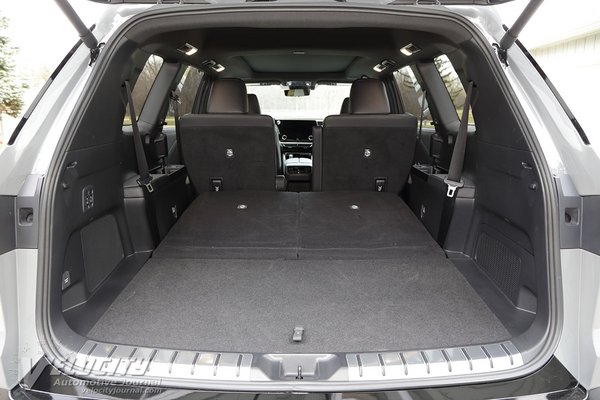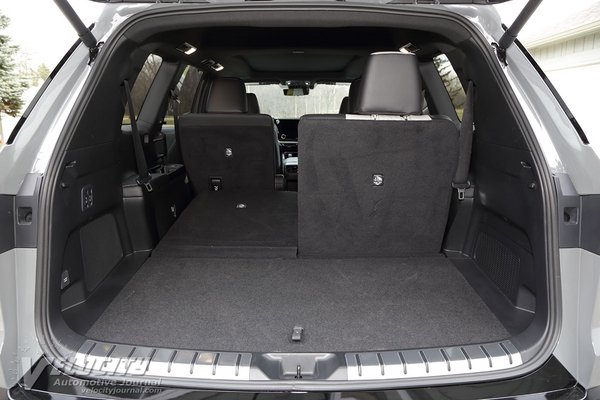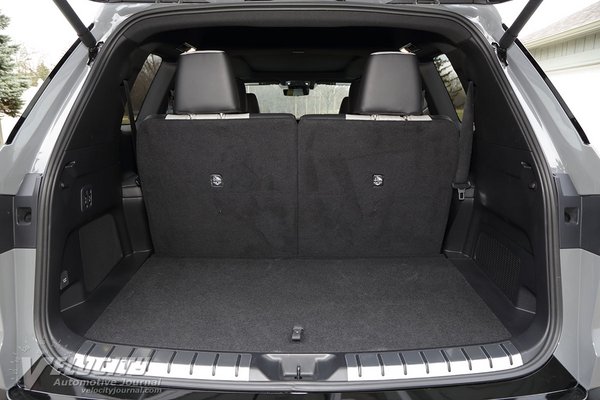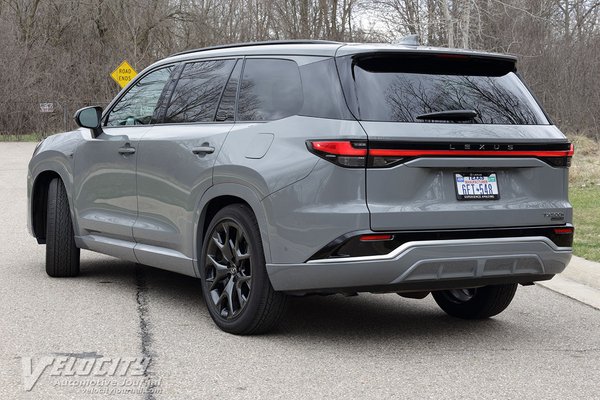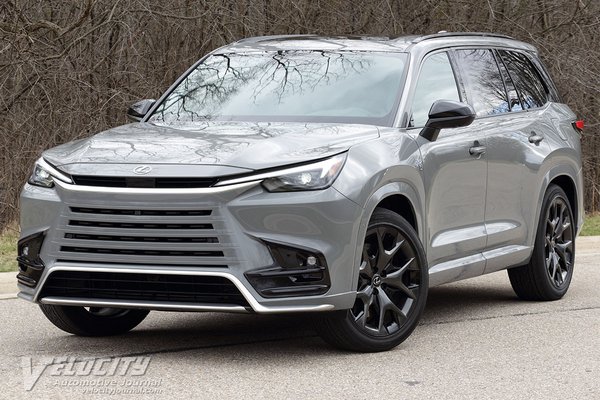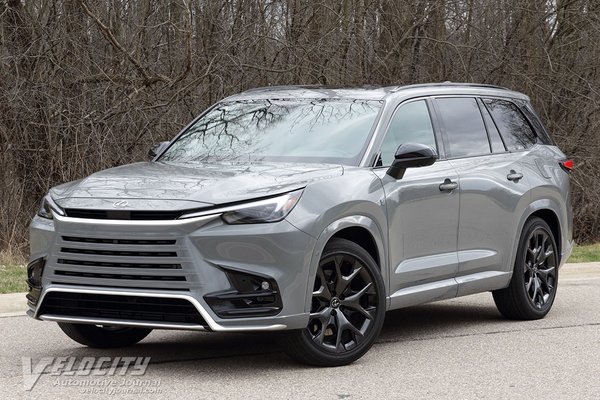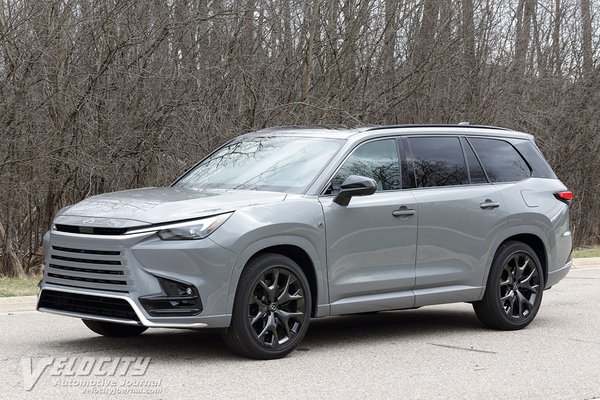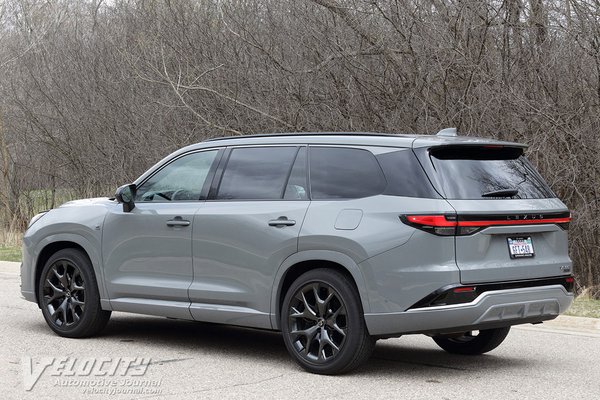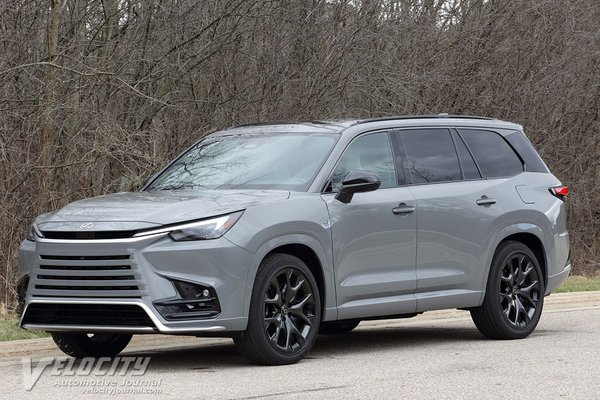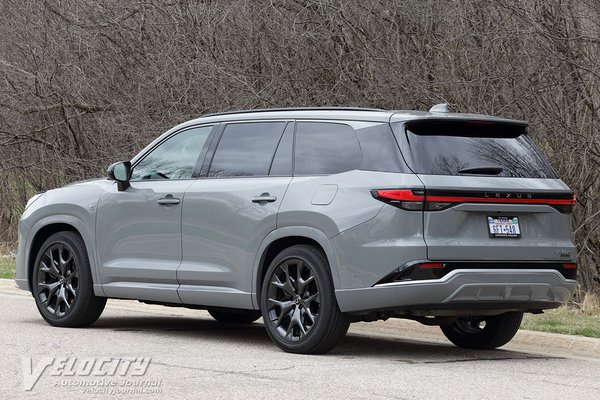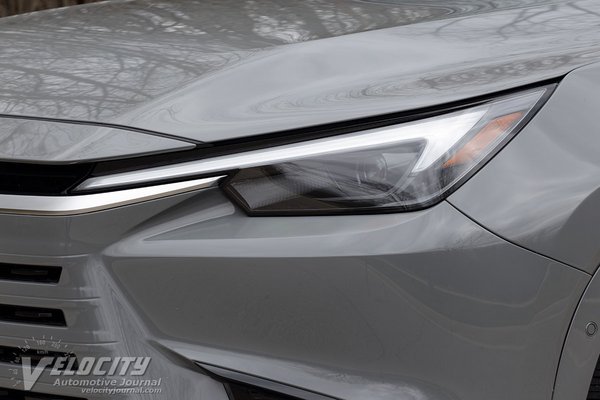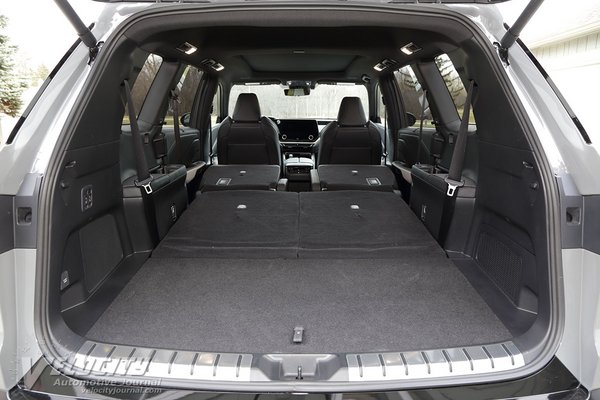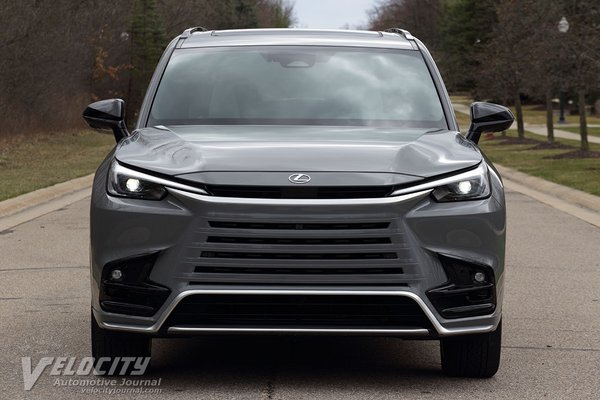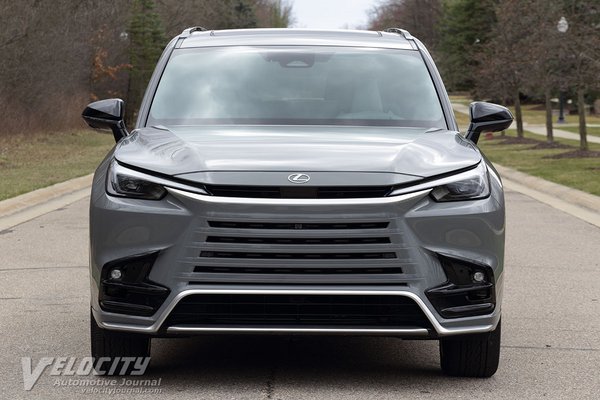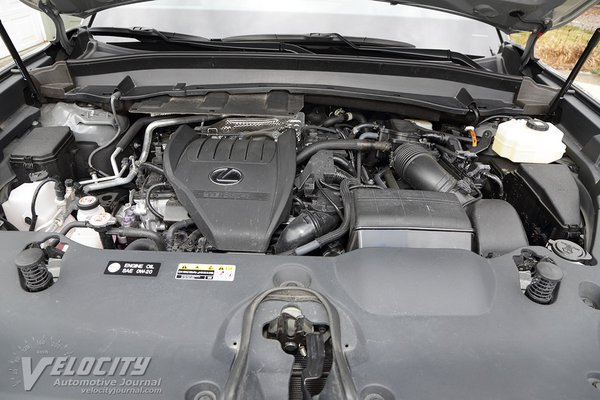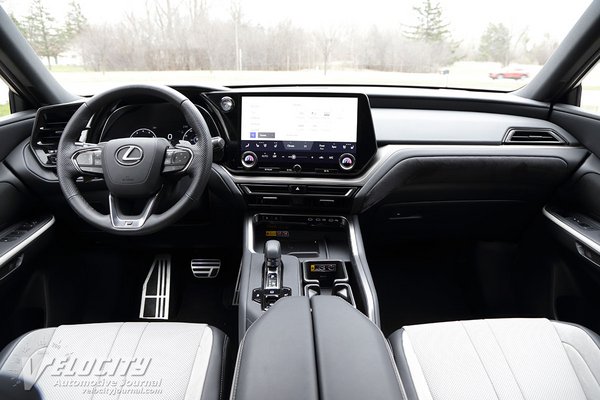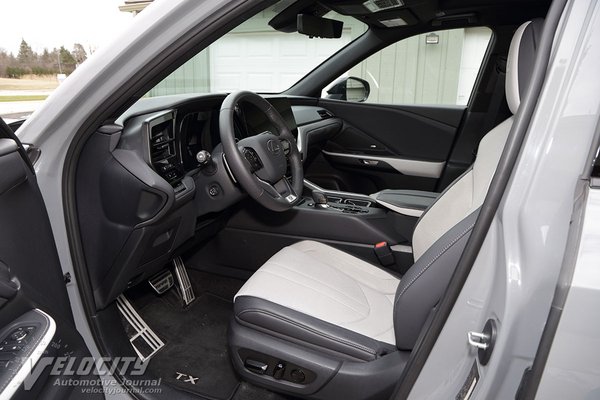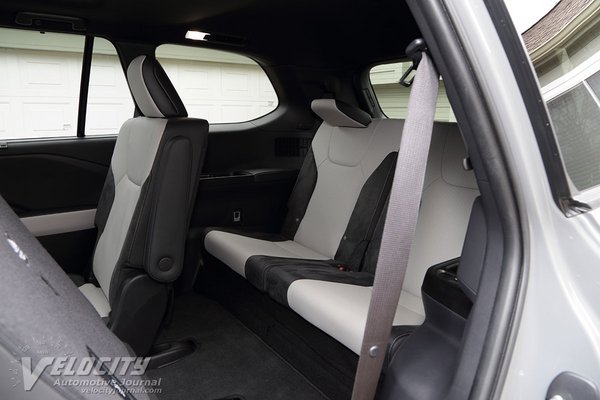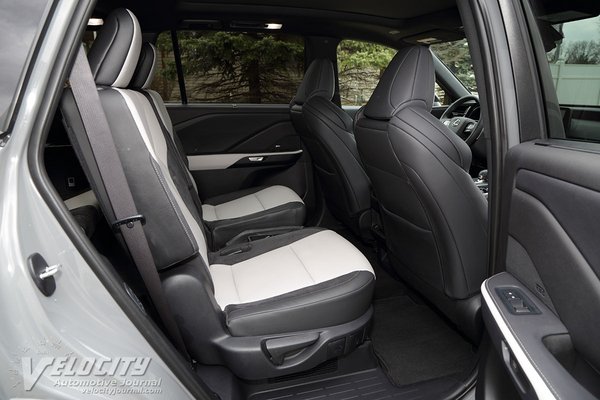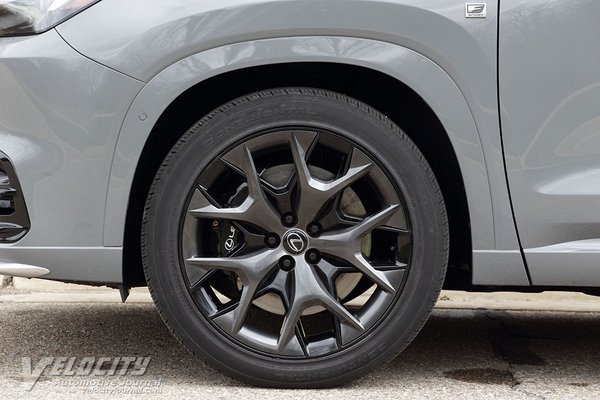2024 Lexus TX500h F Sport Performance Luxury AWD
09/25/2024
Shahed Hussain
Lexus has been expanding its SUV lineup over the past few years, adding the compact RZ EV, midsize TX, and redesigned GX. Positioned above the midsize RX and below the rugged GX, the TX is available in both gas and hybrid versions. The TX shares its platform and powertrains with the new Toyota Grand Highlander. Lexus sells six TX models, starting with the base FWD TX 350 ($55,050) and tops out at $78,050 for the TX 550h+ Plug-In Hybrid.
We tested a TX 500h F Sport Performance Luxury ($71,300) equipped with the Technology Package ($2,380), Convenience Package ($895), Mark Levinson audio system ($1,160) and 120V/1500W AC power outlet ($560). The total including $1,350 delivery fee added up to $77,645. We tested a pre-production vehicle so the equipment and trim mix may differ from production models. Significant standard or optional equipment includes a panoramic sunroof, 22-in. alloy wheels, adaptive variable suspension, leather seats, heated and ventilated front and 2nd row seats, 12.3-in. infotainment display, navigation, panoramic view monitor, head-up display, digital rearview mirror, digital key, power folding outside mirrors, power rear door, and power third-row seats. Safety technologies include front cross-traffic alert, radar cruise control, lane departure alert, and lane tracing assist.
Lexus fits the TX with three powertrains: a 2.4L inline-4 turbo, 2.4L inline-4 turbo hybrid, or 3.5L V-6 hybrid. Each engine is mated to a different transmission: 8-speed automatic (2.4L), 6-speed automatic (2.4L hybrid), and CVT (3.5L hybrid). The direct and port-injected 2.4L turbo in the TX 500h is rated for 271-hp @ 6,000 RPM and 339 lb.-ft. @ 2,000-3,000 RPM. A 228V/5Ah NiMh battery pack powers front (64 kW/215 lb.-ft.) and rear (76 kW/124 lb.-ft.) AC motors. Total system power adds up to 366-hp and peak torque is 406 lb.-ft. as calculated by Toyota. The electronic AWD system automatically adjusts front/rear torque split from 75:25 to 50:50. The rear axle in hybrid models is driven by an electric motor. Toyota claims 0-60 MPH in 6.1 seconds and a top speed limited to 112 MPH. The TX 500h is rated at 28/27 MPG (city/hwy.), but we averaged a less impressive 21-23 MPG in mixed urban and highway driving.
All TX models get a front MacPherson strut and rear multi-link suspension. The adaptive variable suspension on the F Sport Performance adjust damping force continuously to balance handling and ride quality. Dynamic rear steering adjusts wheel angle to enhance stability at highway speeds and increase maneuverability at low speeds. Brakes are all-disc, but the hybrid models get 6-piston front discs and single-piston rear discs. A motor-assisted rack-and-pinion system is geared for 2.9 turns lock-to-lock. Low profile 255/45R22 Continental CrossContact LX20 tires are mounted on 22-in. wheels. Other TX models get smaller 20-in. wheels. Towing capacity is rated for 5,000 lbs. for all models. The TX 500h weighs in at 4,949 lbs. Other TX models range from 4,398 lbs. (TX 350 FWD) to 5,57 lbs. (TX 550h+).
The TX interior exudes subtle luxury with padded and stitched interior surfaces. Our test vehicle had a dark gray interior accented with polished matte aluminum trim on the dash and center console. The leather-wrapped steering has audio, phone, cruise, and vehicle status control integrated on the spokes. A high-resolution digital gauge cluster displays a simulated analog tachometer and speedometer, along with turbo boost and other configurable settings. Paddles on the steering wheel enable manual shifting on demand. The infotainment display and climate controls are combined on a tablet-like interface that projects above the dashboard. Seat heating and ventilation settings are readily accessible along with dual temperature knobs. A small audio power and volume knob is conveniently located on the bottom of the display. USB-C ports are scattered throughout the cabin so all passengers have power available for portable electronics. A 12V power outlet is not available, but the USB ports are an effective substitute.
Superb seats are an essential element of luxury, and the TX does not disappoint. The soft perforated leather front seats feel plush and supportive. Similarly, the second-row seats are comfortable with ample legroom. Both front and 2nd-row seats offer headroom for occupants over 6 ft. tall. The third-row suffers from a stiff seatback and cramped accommodations, which limits these seats to short trips only.
Although the 2.4L turbo four and vehicle platform is shared with the Toyota Grand Highlander, the TX adds another layer of refinement that effectively minimizes powertrain noise and vibration. Throttle response is immediate, similar to a normally aspirated V-6. The hybrid powertrain's ample torque output accelerates the 2.5-ton TX effortlessly in urban driving. The paddle shifters deliver rapid, seamless gearshifts on demand. The hybrid powertrain automatically transitions to EV mode at low speeds, but the driver cannot manually engage EV mode. Four drive modes are selectable via a center console knob: Normal, ECO, Sport, and Custom. We mostly left the powertrain in Normal mode as it offers a balance of power and fuel efficiency.
The TX driving experience focuses on isolation and ride comfort. Compared to the Grand Highlander, the TX is subjectively quieter, but feels less connected to the road. The lightly damped suspension allows the body to float over bumpy surfaces, encouraging a relaxed pace. Driving over patched pavement, the 22-in. wheels and low-profile Continentals didn't absorb road impacts as effectively as we expected. The soft suspension results in moderate understeer and significant body roll around curves. Under hard braking, we could feel the front suspension compressing, resulting in noticeable brake dive. The all-vented disc brakes do deliver impressive stopping power, aided by a firm pedal and progressive actuation. Lexus tuned the motor-assisted steering for low effort, which makes the TX feel nimble in urban traffic. At highway speeds, the steering feels too light, as we had to constantly apply steering correction to maintain lane position. After driving the TX and Grand Highlander, we preferred the Grand Highlander's ride and handling balance.
Lexus aims the TX to appeal to premium SUV customers. Positioned near the top of the range, the TX 500h F Sport Performance Luxury commands a significant price premium for its extensive standard equipment and hybrid powertrain. Value-oriented customers should consider the TX 350 Premium or Luxury, which are significantly less expensive than the TX 500h, and can be selectively optioned to include much of the same equipment.

